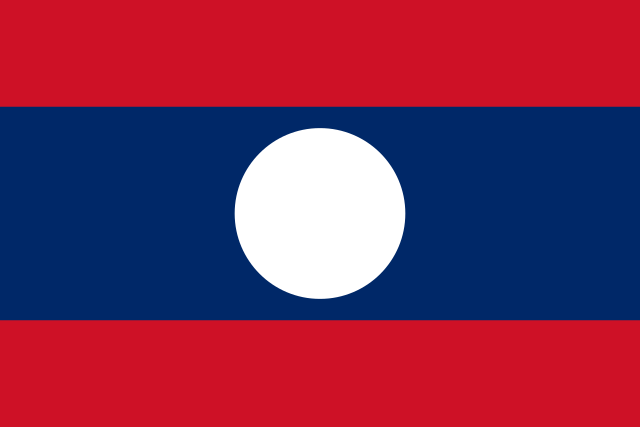









Laos is a Southeast Asian nation known for its stunning landscapes, rich cultural heritage, and significant economic potential. However, it faces challenges in infrastructure development, governance, and international relations that must be addressed to realize its full capabilities.
Overview of Laos: Geography and Demographics
Laos, officially known as the Lao People's Democratic Republic, is a landlocked country bordered by China, Vietnam, Cambodia, Thailand, and Myanmar. Covering approximately 236,800 square kilometers, it is characterized by mountainous terrain, dense forests, and the Mekong River, which plays a crucial role in the country’s agriculture and transportation.
- Population: Approximately 7.3 million people, with a diverse ethnic composition, including Lao, Hmong, Khmu, and many others.
- Capital: Vientiane, which serves as the political and administrative center.
- Languages: The official language is Lao, but various ethnic minorities speak their languages.
Cultural Heritage: A Tapestry of Traditions
Laos is a country where tradition and modernity coexist harmoniously. Its culture is a blend of indigenous practices and influences from neighboring countries.
- Festivals: The country celebrates many traditional festivals, such as Pi Mai (Lao New Year) and Boun That Luang, which attracts both locals and tourists.
- Cuisine: Laotian food is flavorful and often incorporates fresh herbs and spices. Sticky rice is a staple, and dishes like Larb (a meat salad) and Tam Mak Hoong (papaya salad) are popular.
- Buddhism: The predominant religion is Theravada Buddhism, with many stunning temples (wats) that reflect the country’s spiritual heritage.
Economic Landscape: Opportunities and Challenges
Despite being one of the smallest economies in Southeast Asia, Laos has significant untapped resources, particularly in hydropower, mining, and agriculture.
- Hydropower: Laos is often referred to as the “Battery of Southeast Asia” due to its vast hydropower potential. The government aims to export electricity to neighboring countries, particularly Thailand and Vietnam.
- Mining: The country is rich in minerals, including gold, copper, and gypsum. Foreign investment in mining has increased, but environmental and social impacts remain a concern.
- Agriculture: Agriculture employs a significant portion of the population, primarily focusing on rice, coffee, and various cash crops. There is potential for growth through better farming techniques and access to markets.
Infrastructure Development: Bridging the Gaps
Infrastructure remains one of the most pressing issues in Laos. While the government has made strides in improving roads and telecommunications, much work remains.
- Transportation: Many rural areas lack access to reliable transportation, hindering economic development. Projects aimed at improving road connectivity and public transport are ongoing.
- Energy Access: While hydropower projects are expanding, rural areas still face challenges with electricity access. Increasing renewable energy sources will be vital for sustainable development.
- Digital Connectivity: The government is pushing for increased internet access, which is crucial for education, business, and social connectivity.
Governance and Political Climate: Navigating Challenges
Laos is a one-party state led by the Lao People's Revolutionary Party (LPRP). While the government has made efforts to promote economic growth, issues related to governance and human rights remain.
- Political Stability: The government maintains tight control over political expression, limiting dissent and opposition. This can create challenges in terms of international relations and domestic trust.
- Corruption: Corruption is a significant concern, impacting economic growth and public trust. Efforts to combat corruption and enhance transparency are needed to foster a more conducive environment for investment.
- International Relations: Laos faces a delicate balancing act in its foreign relations, particularly between larger neighbors like China and Vietnam. The country’s participation in regional organizations like ASEAN plays a vital role in its diplomatic strategy.
Environmental Concerns: Balancing Growth with Sustainability
As Laos develops its economy, it faces environmental challenges that must be prioritized to ensure sustainable growth.
- Deforestation: Rapid development, particularly in agriculture and logging, has led to significant deforestation. Sustainable land management practices are needed to protect biodiversity.
- Climate Change: The country is vulnerable to climate change impacts, including flooding and droughts. Adopting climate-resilient practices in agriculture and urban planning is crucial.
- Water Management: With the Mekong River being central to the country's ecosystem, managing water resources sustainably is critical for agriculture, fishing, and hydropower.
Future Outlook: Charting a Path Forward
The future of Laos holds promise, but it requires careful navigation of its challenges and opportunities.
- Investment in Human Capital: Education and skill development are essential for empowering the workforce and attracting foreign investment.
- Sustainable Practices: Emphasizing sustainability in economic development will be crucial for preserving natural resources and promoting long-term growth.
- Regional Cooperation: Strengthening ties with ASEAN and neighboring countries can enhance trade and investment opportunities, benefiting the economy.
Laos stands at a crossroads, with the potential to emerge as a key player in Southeast Asia. By addressing its challenges and leveraging its rich cultural and natural resources, the nation can pave the way for a prosperous future.
